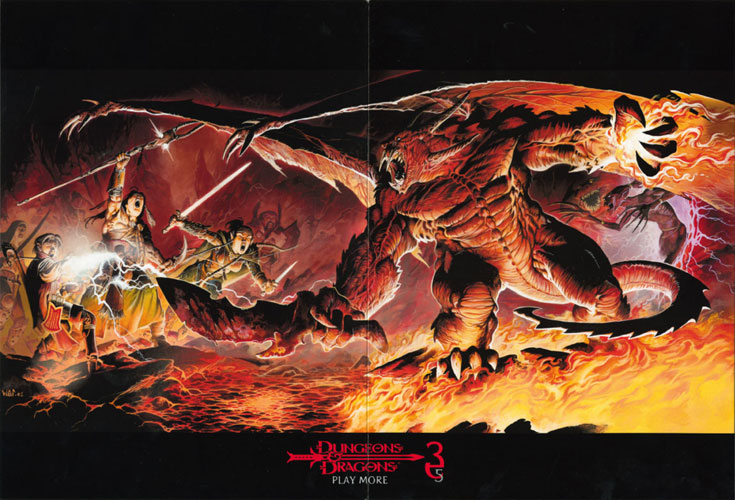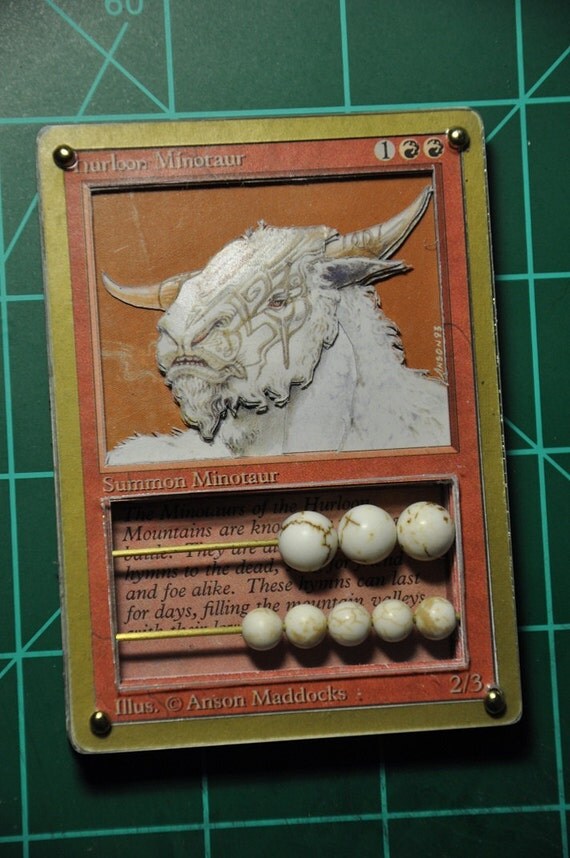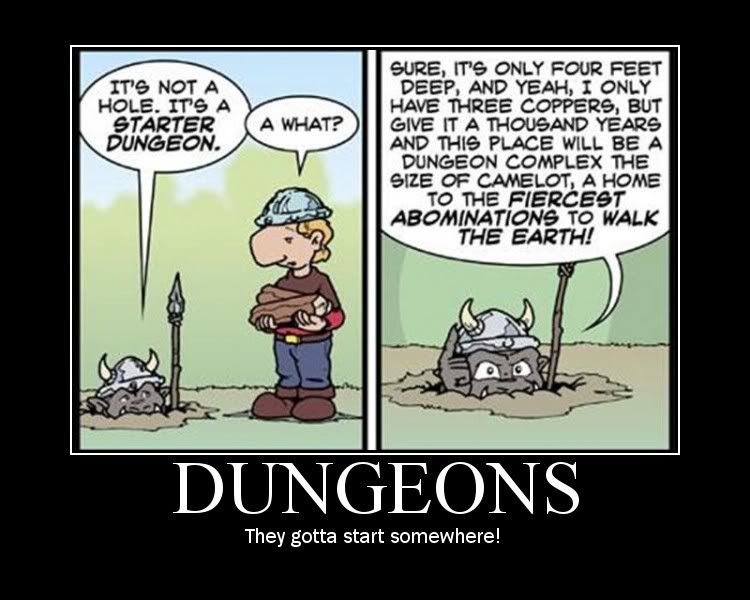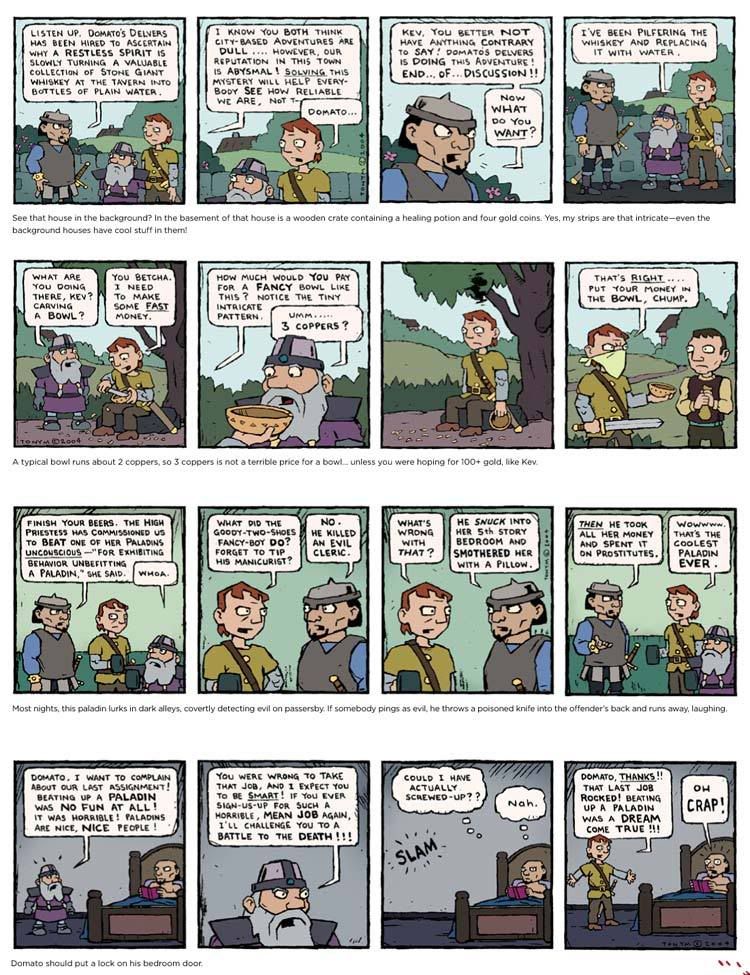
I got this for free (read: packing material) in a box of some other books I'd ordered, so I figured this might be fair game for a short OSSR. So set your wayback machine to March 2004, a few months after the transition from 3.0 to 3.5. It was something of a golden era for Dragon Magazine: never was it easier to generate content for the game, the art was surprisingly good - better than the vast majority of third-party d20 supplements - and clocking in at a meaty 104 glossy pages!
Starting out with the editorial (Wyrm's Turn) by Matthew Sernet, this grabbed my eye:
By comparison with my pull-it-out-of-my-ass style of gamemastering, 100 pages makes me feel small in the pants. Also, this might be the start to that stupid winged kobold meme.In a new campaign run by Christopher Perkins (former editor of Dungeon and now a design manager for Wizards of the Coast), everyone is playing a wildly exotic character. As usual, Chris went overboard designing the world, and somewhere in the 100-page-or-so reference document he gave us, eh presented several new races for the Underdark setting where we'd start our adventures. As a result, the party currently consists of a dragon-warped kobold with dire bat wings grafted to his back, an insane albino drow, a construct with the soul of a dwarf, a bugbear, and two cyclopean rock beings that can turn themselves into puddles of goo. I say "currently" because Mat Smith keeps getting his kobold taken out in the first round of combat, and pretty soon he'll fail all his stabilization checks and have to make a new PC.
Page 8 has a Zogonia strip, which makes me miss old-school gaming comics. I can't find the exact strip, so here's a bunch:
Gaming comics is very old-school to me, and I always felt that the comics were the best part of the magazine...well no, I tell a lie. The early gaming comics in Dragon were crap and only heavy doses of nostalgia make them acceptable now, and they should not have been acceptable back then. Finieous Fingers is a crime. But at this point, Dragon was on a serious roll with Zogonia, Dork Tower, and Nodwick all bringing the funny, with great gags and decent art.

Case in point, another Zogonia strip and a full-page Dork Tower flank "Up On A Soap Box," where Gary Gygax talks about the character of Don Kaye - Murlynd. This was deep grognard territory by any standard, since Gary (and his character Mordenkainen) was directly competing with Don/Murlynd in-game as to who could be the most bad-ass magician. It's kind of weird to think that at this point GG was basically being paid to write up tales from the gaming table from 30+ years ago.
Surprise two-page add for Dark Sun...as exemplified by articles in Dragon #319 and Dungeon #110. I remember both of these, but it's weird to me to see Paizo spring for a double-page ad, and wondering if they weren't hoping to spin it off as a licensed property or were having trouble getting people to pay their rates.
Countdown to Eberron is exactly what it says on the tin, and it talks about the races of the setting, which results in snippets like this on Shifters:
Whatever you think of shifters, the entire idea that they needed to differentiate shifting from the barbarian's rage ability - not to mention double-down on making shifting resource-intensive by requiring you to buy more and more feats to remain on par - just looks like bad design to me, and this thought process behind it shows that the thinking that led to that kind of hyperspecialization started off very early indeed.After the designers finish their work on a book, a three-person development team spends time reviewing the new game elements, comparing the book's goals with the actual design, and addressing any issues that come up in the process.
During the development process of EBERRON, our goal for the shifter was to make sure that players were excited about using and improving their shifting ability. There were great ideas built into the race already, so we just wanted to emphasize what was already there. The first thing we did was to make shifting a free action, encouraging its use in combat. From there, the mechanics of the shifting ability began to look a lot like the mechanics for the barbarian's rage ability. To differentiate between the two, and to allow the shifting ability to improve as the character increased in level, we came up with the idea that every shifting feat would also extend the duration of the character's shifting ability as well as improve the shifting power in some other way. This encourages players who build their characters around the shifting ability to focus more and more resources on it as they go up in level and makes a shifter rogue or fighter different from a human rogue or fighting in a really interesting way. You can see how this mechanic works in the example feats provided in the article.
Xenophilia gives "four new exotic races." New races, if you fill out all the backstory and crap about alignment, names, and the like, are great page-fillers, and these are no exceptions.
The Adu'jas are humanoid plants that were old when elves were young, and showed them the druidic ropes, so to speak. At a +2 LA they were never going to be popular, although they start out with Photosynthesis, Photoregeneration, woodland stride, and the ability to speak with plants 1/day. Oh, and they're vulnerable to fire. Preferred class Druid. Meh. I do like the idea of a plant PC race, but this ain't it.
Gruwaares are dark furry Unseelie fey that picked the wrong horse when Lolth split off from the rest of the Elven pantheon. They're actually not bad as far as sheer mechanics go: Small, Fey, darkvision, natural weapons (claws), disguise self 1/day and yet still LA +0. They're basically better than halflings for most starting Rogue builds.
Golmoids started out as weak golems and became a self-reproducing humanoid race, because of Gnomes. Gnomes aside, they're like shitty obsidimen. 2 points of Natural Armor, massive Dex penalty, Endurance as a bonus feat, and LA +1. Definitely a pass.
T'kels are vaguely lizard-ish humanoids that are classified as Monstrous Humanoids. They get racial swim speed, claws, and dark vision, preferred class Monk. Neither great nor silly, LA +0.

Urban Druids: Secret Voice of the City is a re-skin on the Druid class for urban environments like cities and towns. This is explicitly something that people say they want, and which D&D has tried to give them many times in many different ways, not all of which are compatible. The problem, natch, is how many of your adventures take place in cities - which are MUCH more complicated environments than your average dungeon or wilderness - and how many cities of any size you actually have. Although historians will probably remind me that you could have cities of hundreds of thousands of people in pre-Modern times, those places were not described as nice. We're talking open sewers, slavery, general lack of access to fresh water, terrible sieges, no such thing as urban planning...anyway.
The reskin is a little too excessive, to the point of giving the urban druid their own spell list. Other than that, it's pretty flavorful and mechanically interesting: spontaneous casting to convert spells into repair spells (somebody had a gander at the early Eberron spell list, obviously), Crowdwalk and Alley Fighting, Disease Immunity, and Information Network are all relatively neat and appropriate. "Favoured City" on the other hand seems excessive - really, how many metropolises of any size are you going to visit repeatedly in your campaign? - and "Urban Shape" is just wildshape except instead of turning into monsters you turn into humanoids, non-construct "urban" animals (there is a list), and at high enough levels inanimate objects (and at really high levels, animate objects).
I'm on the fence, really. I think it's a much better effort at an urban druid than the urban ranger, but is it worth the effort? If you were definitely looking at a heavily city-based campaign instead of a wilderness-based one, possibly. The unique spells for the Urban Druid aren't much to write home about, either. I don't want to pay 100 XP so an abandoned building can speak.
Full-page ad for "The First Officially Sanctioned Dungeons & Dragons 3.5 DM Screen."

Truenames and Fetishes is one of those articles that looks like it should have been cited in Tome of Magic (3.5), but was not. It's your generic magic-expansion article for the era, lots of feats you're not going to take for moderate benefits. The thing is, this is basically the 3.5 origin of Truenames. I won't say it's better than in ToM, although that's a low hurdle to jump; the main benefit of using a truename with a spell is that it doubles the ability modifier bonus for the spell, which applies for overcoming spell resistance and dispel checks (and forces a dispel check when counterspelling). Having a truename also requires you to have a fetish...

Power Components is basically a variation, or addition to, metamagic components from Unearthed Arcana: rare bits of monsters that can be used to pay the XP and material costs associated with certain spells and making certain magic items. It's niggly, but I generally approve because it's good thematic sense (mostly) and a callback to previous editions. That said, there's stuff like how the spine of a solar paladin can be used to make a holy avenger which is weird to me, and you do face the general issue of breeding farms and other sorts of issues associated with "harvesting."
Body of Knowledge is a set of three related 10-level prestige classes for casters, with the connective tissue being that they all specialize in different aspects of the body. Think of them as three variants on the Blood Magus.
So the Osteomancer focuses on bones.

A lot like this.
The abilities are a lot more fun than the spellcasting, which is good because this is a 1/2 caster class and you're not getting to archmage after ten levels anyway. It lets you do fun stuff like excrete bone spurs as weapons (which can become aligned, adamantine, silver, cold iron, etc.) as you increase in level), immunity to disease, dissolve your skeleton to turn into an ooze temporarily, seize control of an opponent's skeleton, etc.
(I admit to having a fondness for this class, especially in conjunction with Blood Magus, as you can store magic potions in your blood and then use them as the bone spurs erupt through your skin - great for oils of magic weapon and the like! Mainly for villains, though, and they really only function as closet trolls.)
The Flux Adept focuses on body chemistry and glands and suchlike. The height of their mighty powers unlocks Regeneration 1. Needless to say, that's not a great accomplishment for any class, much less a 10th-level capper power.
The Cerebrex focuses on nerves and looks like it should have some synergy with psionics...kinda sorta. You get some fun abilities: Scent, Blindsense, immunity to telepathy at 5th level, eidetic memory, the ability to trigger rages on and off for any character within sight, the ability to sense what spells an opponent is packing and make them inaccessible - which sounds fun, but comes with so many restrictions it's basically a twice-a-day gimmick.
All in all, while some of the abilities are fun, I think all three prestige classes are largely useless for play. Just not enough power for the requirements, and the PCs would definitely be behind the curve taking them - although they might be fun for NPCs.
Magic's High Notes is a Bizaar of the Bizarre type article with 9 magic instruments, all of which are specifically aimed at bards. They vary from the relatively minor snake charmer that adds a +10 to Perform checks to fascinate reptilian critters (which is supposed to include dragons, but I suspect some rules lawyers might have trouble with that) to the minor artifact Organ of Souls, which gives Strahd a reason to be playing the organ for three hours a day.
Beasts of the Sun: Central American Monsters is a fun if not terribly well-thought-out article on what it says on the tin. Starting out with Cipactlu (CR 20), the World Lizard, who at 861 hp is destined to give some party quite a long combat, provided they don't manage to make it save-or-die - it's technically Epic, but doesn't have any form of Spell Resistance, so I suspect a well-kitted wizard could wish it to fuck off to the heart of the sun or eat itself to death or something. There are a bunch of other critters, and I note that oddly the Chaneque (CR 2) and the Xilob (CR 8) are both LA +4, which reminds me that I hate level adjustment and want it to die. I'm not saying I would never use any of these critters, but they're definitely not on the A-team of Mesoamerican beasties.
The Ranger Knight of Furyondy is a Greyhawk-based prestige class that combines being a knight (preferably a paladin) and a ranger, although without explicitly requiring that the character be either of those things and you can pretty much single-class ranger it. You basically get some bonuses to mounted combat, which is okay but not ideal for taking your horse into the dungeon.
...except I just had a vision of a Halfling Paladin/Ranger/Mounted Knight taking their Pony Unicorn into the dungeon. That would be fun.

Or, y'know, giant rabbit. Whatever.
Dungeons & Dragons Heroes: Magic, Monsters, and Mayhem was part of the "Silicon Sorcery" series of articles, offering feats and spells form video games that you could use in your tabletop play - in this case, stealing from D&D Heroes. Nothing special here except maybe the Soul Elixir minor artifacts that give permanent boosts to various of the individual's attributes, which is very much a video game type booster. There's also a couple monsters, like a CR 13 skeletal arcane archer and a CR 12 ice golem.

Battle Guard of Tempus: Soldier-Saints of the Lord of Battle is part of the "Faiths of Faerun" article series, where people with presumably nothing better to do turn the old specialty clerics into shiny new prestige classes. Anyway, it's a 10-level half-caster prestige class dedicated to Tempus who specialize in weapons, especially temporarily enchanting their own weapon. If they had shrunk it down to a 5-level full-caster it might be competitive, but as it is I'm pretty sure a 5th-level artificer would laugh these guys off the table. Also introduces the Army domain, which gives you the spell-like ability to give a rousing speech.

In the same series, we also have the Holy Strategists of the Red Knight, which isn't actually a prestige class but a handful of feats and a couple new cleric spells. This is mostly notable in that one of the feats actually cites Sword and Fist, because the full Complete series hadn't come out yet. The best feat is Lady's Gambit, which lets you sacrifice up to [character level] hitpoints and add 1/2 of that to your attack and damage rolls for 1 round.
Out of Thin Air: Symmoning Monsters in D&D and D&D Miniatures is part of "Under Command" article series, which is based mainly on the D&D Miniatures game. Oh gods, the Miniatures Handbook was a thing.

The main point of the article is to be a good summoner and choose your summon monsters ahead of time; I've actually debated going one step further and making players do a M:tG style agreement with certain creatures where they let themselves be summoned, but that might be going too far.

Some of you might get this reference!
Expanded Psionics Preview #3: Psionic Power - Because you could literally just print pages from future products in Dragon at this point, this is a look-ahead to the Expanded Psionics Handbook. While we might give Bruce Cordell some well-deserved jibes from time to time, I actually like the concept of augmenting and overchannel and all that, and thought that psionics in 3.5 might have been one of the best of the D&D subsystems...y'know, until Complete Psionic came out.
There's a full page of Nodwick after that. It's apparent from this own that the editor had given Aaron Williams a "head's up" on the issue's theme of exoticness.

I couldn't find a copy of that either, so have this.
Running A Non-Iconic Part, Part 1: Fighters and Rogues is part of the "Wizards Workshop" series, aimed mainly at Mister Caverns and how to run their games. In this case, it's about how to handle parties that don't fulfill stereotypical Fighter/Mage/Thief/Cleric combinations. Some of the advice is even good!
...and not-so-good.When choosing monsters that focus on melee attacks, opt for using weaker creatures in larger numbers rather than a single tough opponent. The party's spellcasters can destroy a lone monster with one spell if it fails a save, particularly at higher levels. On the other hand, weaker monsters force the spellcasters to hold their single target spells in reserve.
Ending with a chart of questionable circumstance bonuses for the Negotiation skill and a list of prestige classes that "make spellcasters better combatants, or give them the stealth of rogues." At this point only Complete Warrior was out, so most of these are from 3.0 products like Magic of Faerun, Masters of the Wild, Faiths and Pantheons, and Tome and Blood.The spell find traps can turn a cleric into a rogue for a while, but most clerics have too few skill points to devote any to Search and Disable Device.
Designing Wilderness Adventures: Into the Wild is a Monte Cook joint. The man has a way of spreading out three sentences worth of ideas into three pages, beginning with "Defining the Wilderness Adventure."
May the dark gods consume your soul, Monte."Wilderness adventure" is as inaccurate a term as "dungeon adventure." While a "dungeon" can be a cave system, a sewer, the interior of a castle, a trap-filled tomb, or a literal dungeon, "wilderness" can refer to almost any out door setting. Even while hunting in the king's woods at the edge of the city or on a busy road, the group can have a "wilderness adventure." Of course, some adventures take place in the actual wilderness.
Steels, Shields, and Spirits: Official Answers is a "Sage Advice" article, designed as FAQ for various game-related mechanics questions. Not terribad as things go, with pointers to the errata file where necessary, and gives us wonderful quotes like:
"A foe can grab the shield. Conduct such attacks just like any other grapple or snatch attack."
"Incorporeal touch attacks and touch attacks aren't the same thing. If they were, they would not have different names."
"There's nothing in the tower shield description that implies you can't use it while mounted. If you claim cover from the shield, your mount gets no benefit."

The horse might like to argue the point.
Wow, just ran across a full-page add for terrible d20 OGL products Spellslinger and Virtual...from Fantasy Flight Games. The world has changed a lot since 2004.
Last page is the cover illo without the text, and the back inside cover is an add for Origins 2004! I've never gone to Origins, and at this point am not likely ever to do so. I've made peace with that fact. Back cover ad is for Final Fantasy Crystal Chronicles.
